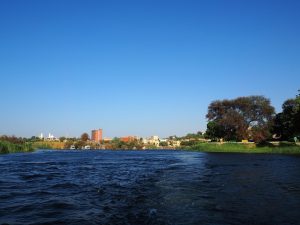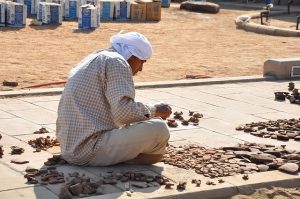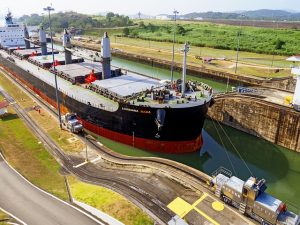終結はいつ?命の水をめぐる攻防——ナイル川ダム問題、今後の展開に注目!
 イメージ
イメージ
終結はいつ?命の水をめぐる攻防——ナイル川ダム問題、今後の展開に注目!
先日、英字新聞で「エチオピアの巨大ダム建設が間もなく完成する」
というニュースを目にしました。
ついにこの日が来たか──私は静かな感慨を覚えました。
なぜなら、エチオピアによるナイル川のダム建設は、
私が中学生だった約50年前から「懸案事項」として耳にしていたからです。
それほど長い年月にわたり、交渉と対立を繰り返してきたこの問題。
しかし記事を読み進めると、下流国であるエジプトとの交渉は
今なお難航しているという現実がありました。
ナイル川の水をめぐる長い歴史——エチオピアの夢とエジプトの危機
ナイル川はアフリカ大陸最長の大河であり、地域の命を支えてきた存在です。
中でも「青ナイル」と呼ばれる支流は、エチオピア高原に源を発し、
ナイル本流の約60%の水量を供給しています。
グランド・エチオピアン・ルネサンス・ダム(GERD)とは?
正式名称:Grand Ethiopian Renaissance Dam(GERD)
着工:2011年
発電能力:約6,000メガワット(エチオピア最大規模)
このダムは、東アフリカ全体の電力事情を一変させる「アフリカの希望」とも呼ばれる
国家的プロジェクトです。
一方、ナイル川下流のスーダンやエジプトは、
生活、農業、経済活動のほぼすべてをナイルの水に依存しています。
特にエジプトでは国土の約90%が砂漠。
人口の大半がナイル沿いに集中しており、ナイルの水がなければ国家が成り立たないのです。
ダム建設をめぐる各国の主張
 イメージ
イメージ
◾エチオピアの立場
- ダムは貧困脱却と産業振興のために不可欠な国家プロジェクト。
- 「周辺諸国への脅威ではなく、地域全体への恩恵だ」と強調。
- ただし、法的拘束力のある合意には消極的。
◾エジプトの懸念
- ナイル水資源の90%以上に依存するエジプトにとって、貯水の影響は死活問題。
- 干ばつ時や初期の水量低下が農業・生活に深刻な打撃を与えると警告。
- 「国際的な合意と法的拘束力がなければ、稼働は容認できない」という強い立場。
交渉の経緯と現在の状況
- 2023年7月、エジプトとエチオピア両首脳が「4カ月以内の解決」を目指すと合意。
- しかし、その後交渉は再び決裂。
- エジプトは「一方的な貯水は違法」として、国連安保理やアラブ連盟にも問題を提起。
- 一方のエチオピアは「建設的な対話を望む」としながらも、
譲歩には慎重な姿勢を崩していません。
水の減少がもたらす現実的な影響
 イメージ
イメージ
◾農業・経済への影響
エジプトの農業は灌漑が中心。
水量の変動は農作物の収穫量に直結し、経済にも波及します。
水田の作付け制限や海水淡水化施設の建設などが進められていますが、
根本的な解決策には至っていません。
◾国民生活への不安
都市部では水圧の低下や断水の可能性もあり、国民の間には水不足への不安が広がっています。
なぜナイル川の水紛争はここまでこじれているのか?
背景には、20世紀初頭の不平等な水利用条約が存在します。
- 1929年と1959年のナイル水利用条約では、
エジプトとスーダンに圧倒的に有利な水利用権が与えられていました。 - しかし、この条約にエチオピアは加わっておらず、
自国に不利な条約だとして歴史的な再交渉を求めてきたのです。
軍事衝突の可能性は?——今こそ外交努力を
ナイルの水をめぐる緊張は、しばしば軍事衝突の可能性さえ示唆されてきました。
実際、エジプト政府が「すべての選択肢を排除しない」と発言したこともあり、
地域の安全保障上の懸念は根強く残っています。
とはいえ、今求められているのは、国際社会やアフリカ連合(AU)
を通じた冷静な外交と対話の継続です。
日本から見た「水と国境」の問題
日本は島国であり、ナイルのように国境をまたぐ大河は存在しません。
そのため、「水をめぐる国際摩擦」は実感しにくいかもしれません。
しかし世界には、ナイル川のほかにもチグリス・ユーフラテス川、ヨルダン川、メコン川、
インダス川など、複数の国を流れる河川が数多くあり、
そこでは水をめぐる複雑な政治・経済・歴史が絡み合っています。
終わりに——「命の水」が平和の象徴となる未来を願って
ナイルの水は、まさに命そのもの。
だからこそ、この問題は単なるインフラ開発ではなく、人々の生存に直結する問題なのです。
私たちはこの議論が、武力ではなく対話と妥協によって解決される未来を目指すべきです。
ナイル川が「争いの火種」ではなく、
「平和と協力の象徴」となる日が来ることを、心から願ってやみません。
 image
image
When Will It End?
The Struggle Over the “Water of Life” —
Spotlight on the Nile Dam Dispute
Recently, I came across an article in
an English-language newspaper announcing that
Ethiopia’s massive dam project is nearing completion.
I couldn’t help but feel a quiet sense of emotion.
Why? Because the Ethiopian dam project on
the Nile River is something
I first heard about as a teenager—nearly 50 years ago.
For decades, it has been a recurring issue,
marked by repeated negotiations and conflict.
But as I read further,
I was reminded that talks with Egypt,
a downstream country, remain stalled even now.
A Long History of Water Disputes —
Ethiopia’s Dream vs. Egypt’s Crisis
The Nile River is the longest river in Africa and
has long been a lifeline for the surrounding region.
Of particular importance is the Blue Nile,
which originates in the Ethiopian highlands and
contributes about 60% of the Nile’s total flow.
What is the Grand Ethiopian Renaissance Dam (GERD)?
- Official name: Grand Ethiopian Renaissance Dam (GERD)
- Construction started: 2011
- Power capacity: Around 6,000 megawatts
(Ethiopia’s largest infrastructure project)
GERD is seen as a symbol of hope for East Africa,
potentially transforming the region’s power supply and economy.
Meanwhile, Sudan and Egypt, both downstream,
depend heavily on the Nile for their daily lives,
agriculture, and economy.
In Egypt’s case, about 90% of the land is desert,
and the majority of the population lives along the Nile,
making the river absolutely indispensable.
Conflicting Positions: What Each Country Claims
 image
image
◾ Ethiopia’s Stance
- The dam is vital for eradicating poverty and
promoting industrial development.
- Ethiopia insists it is not a threat to neighboring countries and
instead offers regional benefits. - However, it remains reluctant to enter legally binding agreements
over dam operations.
◾ Egypt’s Concerns
- With over 90% of its water resources coming from the Nile,
Egypt views the dam’s reservoir as an existential threat.
- Particularly during droughts or the initial filling period,
reduced water flow could have severe consequences
for agriculture and daily life.
- Egypt demands a legally binding agreement
before allowing dam operations to proceed.
Negotiation Timeline and Current Status
- In July 2023, the leaders of Egypt and
Ethiopia agreed to aim for a resolution within four months.
- However, negotiations broke down again shortly afterward.
- Egypt denounced Ethiopia’s unilateral filling of the reservoir
as illegal and brought the issue to the UN Security Council and
the Arab League.
- Ethiopia, while calling for constructive dialogue,
has shown little willingness to compromise.
Real-World Impacts of Reduced Water Flow
◾ Agricultural and Economic Consequences
Egypt’s agriculture relies heavily on irrigation.
Any change in water flow directly affects crop yields,
which in turn impacts the broader economy.
Though the government is pushing for solutions
such as limiting rice planting and building desalination plants,
these are only stopgap measures.
◾ Growing Anxiety Among Citizens
 image
image
In urban areas, residents are already worried about
low water pressure and potential shortages,
fueling public concern about water security.
Why Is the Nile Water Dispute So Intractable?
The roots of the conflict lie in historically unequal treaties
signed in the early 20th century.
- The 1929 and 1959 Nile Water Agreements
granted disproportionate water rights to Egypt and Sudan.
- Ethiopia was not a party to these treaties and
has long regarded them as unfair,
pushing for a historical re-negotiation of water rights.
Risk of Military Conflict? — The Need for Diplomacy
Tensions surrounding the Nile have, at times,
raised the possibility of armed conflict.Egypt has even gone so far as to say it
“does not rule out any option.”
This reflects ongoing regional security concerns.
What’s needed now more than ever is sustained diplomatic efforts,
with the support of the international community and the African Union (AU).
How Japan Views Water and Borders
As an island nation, Japan has no transboundary rivers like the Nile.
Thus, many Japanese may find it difficult to grasp the intensity of
international water disputes.
But around the world, rivers such as the Tigris–Euphrates,
Jordan, Mekong, and Indus cross multiple borders,
often becoming focal points of geopolitical, economic,
and historical tensions.
In Closing — Hoping the
“Water of Life” Becomes a Symbol of Peace
The Nile truly is the “water of life.”
That’s why this issue is not merely about infrastructure—
it’s about people’s survival.
We must strive for a resolution through dialogue and compromise, not force.
Let us hope that the Nile, instead of being a spark for conflict,
becomes a symbol of peace and cooperationin the years to come.

